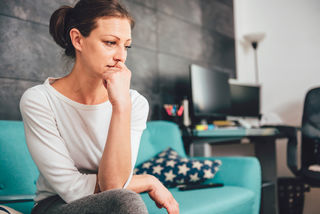Anxiety
Do You Have "Post-Isolation Syndrome"?
Four tips for getting back into the world.
Posted April 30, 2020 Reviewed by Jessica Schrader
As the world begins to slowly reopen, it's time to be mindful of how you are going to exit isolation and reintegrate back into aspects of your life.

Many of my clients are experiencing what I've termed "post-isolation syndrome." It is characterized by nervousness, anxiety, and worry about reintegrating back into the world. One is filled with great dread and reluctance to go back to work or leave home.
For many people, venturing outside brings up very mixed feelings. On one hand, you may experience some excitement about resuming work, going to stores, and seeing friends and family again even at a distance. You might be longing to return to some parts of your previous routine. On the other hand, you may have adapted to being at home and feel safe there. You are aware that the virus is still active and feel scared to change anything about what you are currently doing for fear that this will lead to illness. If this sounds like you, remember that these feelings are normal. You've been through massive change and profound levels of fear and anxiety.
The impact of social isolation on one's mental health and reintegrating back into society has been previously studied in many groups that have been separated from society for prolonged periods of time such as astronauts, scientists who studied out in the remote wilderness, the elderly, and those who have been incarcerated.1 "Gate fever" is one term used to describe the anxiety people who have been incarcerated feel as they are about to leave prison.2 What has been found repeatedly is that reintegration after isolation takes time, is sometimes not easy, and requires support.
Here are some tips for coping with the anxiety you might be experiencing as you come out of isolation.
Four Cs for Coping With Post-Isolation Syndrome
1. Control. Focus on what you can control versus what you can't. For example, you can wear a mask when you leave your home and bring sanitizer wherever you go. Also, you can rearrange your work environment to make you feel more comfortable such as moving desks apart or creating a policy or routine for sanitizing. Make a plan of action steps that will help you to feel safer and more secure when outside of your home.
2. Clarify. Before you see friends, family or coworkers be clear with yourself and others about what your boundaries are. Let them know how often or in what context you feel comfortable seeing them. Be specific. A hug is not OK but 6 feet apart is alright.
3. Calm. Before you leave the house, do some deep breathing exercises to reduce your anxiety level. Deep breathing is important for reducing your blood pressure and creating a sense of calm.
4. Choose. Choose your pace. You don't have to jump back in fully. Take your time. Pace yourself. Go out for short amounts of time to habituate to being back in public places.
If you are struggling to leave the house or feel paranoid, don't hesitate to contact a mental health professional. It is a time of crisis in the world and it's stressful. It's OK to seek support!
To find a therapist, please visit the Psychology Today Therapy Directory.


